Trump’s alternative reality? No warming, cool oceans, intact coral

Melting or not? (I.Quaile, Greenland)
“Irene, have you heard the news? Looks like Trump has pulled out of the Paris Agreement.” While the US President kept the suspense up until Thursday night – has he, hasn’t he, will he, won’t he -I struggled to reconcile his action with what I was hearing from a wide spectrum of highly intelligent people with decades of research and experience to their credit.
I was in Kiel this week, on Germany’s Baltic coast, attending a working meeting of the scientists involved in BIOACID, a national German programme (supported by the BMBF, Federal Ministry of Education and Research) to investigate the “Biological Impacts of Ocean Acidification”. It has almost run its course, eight years of research in the bag.
And what I was hearing did nothing to allay my concern about the impacts of our greenhouse gas emissions. We are rapidly and undeniably changing the planet we live on – land and sea. And that applies particularly to the Arctic.

GEOMAR’s research vessel Alkor in Kiel getting ready for her next trip (Pic:.I.Quaile)
The scientific evidence
Can President Trump really fail to see the dangers of our human interference? Is he really oblivious to what climate change is doing to the ocean that covers 70 percent of the surface of our planet?
Maybe he lives in a parallel universe, where alternative facts prevail.
Back in 2010, I was able to witness the work of some of the scientists assembled in Kiel this week at first hand, as they lowered mesocosms, a kind of giant test tubes, into the Arctic Ocean off the coast of Svalbard. The aim was to find out how the life forms in the water would react to increasing acidification of their environment, as our greenhouse gas emissions result in more and more CO2 being absorbed into the ocean.
Drawing the threads together

Ulf Riebesell with team members deploying experiments at Svalbard (Pic.I.Quaile)
Ulf Riebesell is Professor of Professor of Biological Oceanography at, GEOMAR, the Helmholtz Centre for Ocean Research in Kiel, and the coordinator of BIOACID.
When I first met him, he was kitted out in survival gear, supervising the transport and deployment of the mesocosms from Germany up to the Svalbard archipelago. He doesn’t need the cold-weather gear this week, in a summery Kiel, where he gathered representatives of the different working groups involved in the German project to draw some threads together as the project approaches its conclusion in November.
Good timing. The results will be ready to hand to the delegates attending this year’s UN climate extravaganza, COP23, in Bonn. Another key piece in the jigsaw puzzle of how climate change is affecting the world we live in and will determine the future of coming generations.
All creatures great and small
The scientists assembled represent a wide range of expertise. From the tiniest of microbes through algae, corals, fish and the myriad organisms that live in our seas- they have been trying to find out what happens when living conditions change for our fellow planetary residents – and how all this affects an ever-increasing population of humans and the complex societies we live in.
The ocean is changing at an unprecedented rate. It is becoming warmer, even in the depths, and it is becoming more acidic.
The work of Riebesell and his colleagues has shown that in our rapidly warming world, the CO2 that goes into the ocean is reducing the amount of calcium carbonate in the sea water, making life very difficult for sea creatures that use it to form their skeletons or shells. This will affect coral, mussels, snails, sea urchins, starfish as well as fish and other organisms. Some of these species will simply not be able to compete with others in the ocean of the future.

Cold water coral in the GEOMAR lab in Kiel. (Pic.I.Quaile, thanks to Janina Büscher)
The Arctic predicament
Acidification is not something that affects all regions and species equally. Once again, the Arctic is getting the worst of it. Cold water absorbs CO2 faster. Experiments in the Arctic indicate that the sea water there could become corrosive within a few decades, as Ulf Riebesell has told me on several occasions since I first met him on Svalbard in 2010. “That means the shells and skeletons of some sea creatures would simply dissolve.”
Scientists warn that a combination of acidification, warming and stressors like pollution of all sorts will ultimately affect the food chain. (Indeed that is already happening).
Warming as usual?
While the BIOACID project comes to an end and the scientists fight for new funding to carry on research into ocean acidification, which requires a combination of field-work and modelling, the world continues on course for far more than the two degrees – or 1,5 set out in the Paris Agreement.
“Ocean Warning” was the cover title on the Economist magazine this week, ahead of next week’s UN Oceans Conference in New York.
“The Paris Agreement is the single best hope for protecting the ocean and its resources”, the magazine reads. But it stresses: “the limits agreed on in Paris will not prevent sea levels from rising and corals from bleaching. Indeed, unless they are drastically strengthened, both problems risk getting much worse. Mankind is increasingly able to see the damage it is doing to the ocean. Whether it can stop it is another question”.

Seaweed and algae in experimental tanks at GEOMAR, Kiel (Pic.I.Quaile)
Bending the truth?
At the meeting in Kiel, I asked Professor Hans-Otto Pörtner, the other coordinator of BIOACID, senior scientist at the Alfred Wegener Institute and co-chair of the IPCC Working Group 2 for his view of the current situation, with US President Trump getting set to leave the Paris Agreement:
“Climate change is clearly human made, responsible leadership means that this cannot simply be denied or ignored. I think this is a call for better education and information of the public so that it cannot be misled by bending the truth – and this is what it comes down to. As the last report of the Intergovernmental Panel on Climate Change (IPCC) put it: “Without additional mitigation efforts beyond those in place today, and even with adaptation, warming by the end of the 21st century will lead to very high risk of severe, widespread and irreversible impacts”. In its previous analysis of decision-making to limit climate change and its effects, the IPCC also noted that climate change is a problem of the commons, requiring collective action at the global scale. Effective mitigation will not be achieved if individual agents advance their own interests independently.”
Call to action
Indeed. We are all in this together.
But there is not only bad news:
“It remains to be seen to what extent U.S. emissions will be driven by federal policy, or actions at the State and city level, or by market and technological changes”, Professor Pörtner told me.
There is, it seems to me, an upside to President Trump’s decision to live in his own alternative reality. It galvanizes those of us who live in the real world to make sure climate action goes ahead. China and the EU closed ranks this week. States, companies, civil societies and committed individuals across the USA are stressing they will press on with the green energy revolution regardless.
In the interests of the icy north – and the rest of the planet it influences so considerably – we really have no choice.

The mesocosms are used to research the effects of acidification on ocean-dwellers. (I.Quaile, Svalbard)
LISTEN:
Living Planet: STAND UP FOR THE PLANET
Living Planet: UN TALKS IN TRUMP’S SHADOW
READ:
LEAVING PARIS AGREEMENT A BREACH OF HUMAN RIGHTS?
Arctic climate (anti-)Trump card in Davos
With the Trump inauguration looming large, we have every reason to be more concerned than ever about the prospects for the climate. And given that the Arctic is warming twice as fast as the rest of the world, the high north could be said to be in double trouble.
All the more reason to look beyond the political stage in the narrowest terms to push the need for climate action. Take, for instance, the “Arctic Basecamp” which has been set up in Davos in Switzerland, where that illustrious gathering the World Economic Forum (WEF) is underway. “Responsive and responsible leadership” is the theme, with 3,000 participants attending, more than ever before. And the biggest delegation is from the USA, with 836 participants.
It's cool to learn how to build an #Arctic Basecamp but it's cooler to learn why #ArcticMatters Will you join on FB LIVE 10am CET, tomorrow? pic.twitter.com/1HUHuMqM0O
— ArcticBasecamp Davos (@ArcticDavos) January 17, 2017
Given the president elect’s views on climate change, the decision by some influential scientists to use the mega economic gathering of the great and mighty is a smart move. It seems the time has come to acknowledge that we cannot rely on governments alone to halt climate change and preserve the Arctic ice. Maybe we just have to admit that business has a huge impact, huge potential, and should bear a lot of the responsibility for climate protection? And of course, the chance to get an urgent climate message across to a group of highly influential people from business and politics is just too good to miss.
Time for some responsive and responsible leadership for the Arctic?
A group of leading scientists are holding an Arctic Science Summit in Davos on January 18th, and plan to call on global leaders for immediate action on the Arctic. The summit is a collaboration between Lancaster University, the British Antarctic Survey (BAS) and the Swiss Federal Institute for Forest Snow and Landscape Research (WSL).
Against the background of unprecedented temperatures almost 20 °C (36 Fahrenheit) warmer than normal in some parts of the Arctic this winter, the summit is designed as a call to action to global leaders to apply the theme of “Responsive and Responsible Leadership”, in tackling the global risks posed by Arctic change. Al Gore, Chair of the Climate Reality Project and Christiana Figueres, the former Executive Secretary of the United Nations Framework Convention on Climate Change, are amongst the high profile figures invited.
The summit is being hosted in Arctic Basecamp style tents in the grounds of the WSL, which is aptly positioned close to the official delegate hotel. A good publicity stunt. The tents are a catchy contrast to the luxury accommodation around them. The equipment is provided by the British Antarctic Survey, (BAS) another of the organisers. A reputed scientific organization and active in a region that captures the imagination of a wide audience as the coldest, remotest place on the planet. And which, still, is not immune to the effects of global warming.
Global platform for Arctic action
To Iceblog readers, the message from Jeremy Wilkinson, one of the organizers from BAS, comes as no surprise: “What happens in the Arctic doesn’t stay there. The Arctic is the canary in the coalmine for the world’s climate.” But many of the world’s most powerful decision-makers still haven’t got the message, he says. (Tut-tut, not all following the Iceblog??):
“It (the Arctic) is sending us a warning cry that has profound consequences and risks globally. Yet the Arctic remains invisible to the world’s most powerful decision-makers. We want to change that.”
His colleague from the British University of Lancaster, Professor Gail Whiteman, writes on the BAS website:
“We know that science has important answers in assessing the global risks associated with the Arctic ice melt and we need to make this as visible as possible in Davos. Arctic change is at a critical juncture; hard choices need to be made. These must be evidence-based and not ideologically driven. Ultimately we want to see a new Global Platform for Arctic Action, and it starts here with this summit.”
Renowned climate expert Professor Konrad Steffen is Director of the Swiss Federal Institute for Forest, Snow and Landscape Research WSL. He, too, stresses the need for urgent action and the global relevance of the melting ice:
“The Polar Regions, as well as Alpine regions, will experience two to three times the mean level of global warming predicted for the future. We need to act swiftly to delay, or prevent, the loss of the ice masses in the mountains and the shrinking of the two polar ice sheets which will lead to unsustainable sea level rises.”
“Everybody who’s anybody…”
In a piece for the Arctic Journal entitled “Bringing the Arctic to the mountain”, journalist Kevin McGwin writes:
“Unofficially, Davos is the place to be if you consider yourself to be anyone in politics, business or the non-profit industry, and folks who attend have a saying of their own: the more programme events you turn up at, the less you get out of it. The real action takes place on the sidelines.”
Here’s hoping there is plenty of that at the Arctic Basecamp. McGwin goes on:
“Considering that 3,000-person guest list starts with António Guterres, the newly installed UN secretary-general, and encompasses multiple heads of state (including Xi Jinping) and captains of industry from over 1,000 companies, there is probably something to this.”
Indeed. If you want to reach a lot of very influential people with a message about risks associated with climate change, Davos is certainly one place to do it. McGwin notes that the major Arctic Frontiers gathering is taking place in Tromso, Norway, at the same time. I have attended that event several times in recent years. It is undoubtedly an important meeting with a scientific and a political section. But the global players gathered in Davos should, in principle, be able to exert far more influence when it comes to changing the economic and energy patterns which have been the basis for bringing about the climate change that is melting the Arctic.
Arctic melt – business opportunity?
The WEF also reaches wider media coverage, and, arguably, those who really need to change things. Preaching to the converted will not stop climate warming. McGwin quotes Gail Whiteman:
“Few outside the region have an idea of the role the Arctic plays, or the changes it is facing. Those that do tend to see the changes as an opportunity.”
This puts one of the key problems with Arctic climate change in a nutshell. Melting ice means easier access, more activity and thus higher risks for the fragile ecosystem – and ultimately, possibly more climate warming through increased emissions.
Professor Whiteman told McGwin:“We are at Davos to make the Arctic visible. Arctic change is at a critical point, and the kind of decisions that need to be made start at Davos.”
The organizers will also be circulating a petition asking Davos participants to contribute to a kitty to help fund an information campaign to keep decision-makers up to date on what is happening in the Arctic.
It seems the Arctic basecamp idea first came up at Arctic Frontiers in Tromso back in 2012. The Arctic Journal says Whiteman realized, during a discussion there, that people were very keen to get people in the boardrooms of companies to talk about the risk Arctic change was posing to their business. It dawned on Whiteman that the place to reach these people would be in Davos rather than Tromso.
At last year’s meeting, the WEF issued an Arctic Investment Protocol. Whiteman, worries that “once investors take an interest in the Arctic, they will see the opportunity but overlook the risk”.
If the message that “what happens in the Arctic doesn’t stay in the Arctic”is to sink in, McGwin concludes his article, then “what happens in Davos must not stay in Davos”.
Agreed, colleague. But, as we know, competition for public attention is fierce. Let us hope that the Arctic Basecamp will not be upstaged by the other events going on in the Swiss alps this week. And that the overall focus there “Responsive and Responsible Leadership”, and the need for international dialogue and concerted action rather than isolationism will still make the world headlines as the Trumpocene commences across the Atlantic.
Hot, hot, hotter.. can UN talks in Bonn make a difference?
After all the hype surrounding the Paris Climate Agreement in December, there is a real danger of anti-climax, of feeling self-satisfied, of sitting back saying, “Yes, we did”, while the planet continues to break all temperature records and fossil fuel emissions continue to rise.
The first four months of this year were the hottest ever recorded. Even the “ice island” of Greenland has seen temperatures spiking in April, typically a cold month. NOAA says 2016 could be off to a similar start to 2012, when the surface of the ice sheet started melting early and then experienced the most extensive melting since the start of the satellite record in 1978. We have had several reports of islands being submerged by rising seas and devastating forest fires in Canada and now Russia, which experts say will be more common as the planet warms.
Close to my office here in Bonn, Germany’s UN city, the first official working meeting of all the parties to the Paris Agreement started on Monday, going on until next Friday. I have been there, on and off, talking to people, listening in, trying to get a sense of what is happening – or not, as the case may be.
But the atmosphere in Bonn’s new World Conference Centre is definitely low-key compared with the hype surrounding the Paris Climate Conference. Yet the world climate agreement will be worthless if the countries of the world do not succeed in transmitting it into actions in the very near future.
Time to deliver
The President of the Paris COP21, French Environmenent Minister Segolene Royal, and the incoming President of COP22, which will be held in Marrakech, Morocco’s Foreign Minister Salaheddine Mezouar, have made it clear that it is time to shift the focus from negotiation to implementation and rapid action.
The challenge ahead, they say, is to “operationalize the Paris Agreement: to turn intended nationally determined contributions into public policies and investment plans for mitigation and adaptation and to deliver on our promises.”
Indeed. There is no lack of evidence to support the urgent need for faster action on climate change. An increasing number of extreme weather events are being attributed to climate change. The CO2 concentration in the atmosphere is climbing steadily and is likely to cross the critical 400 ppm mark permanently in the not-too-distant future. The global temperature is already one degree Celsius higher than it was at the onset of industrialization. That means very rapid action is needed to keep it to the agreed target of limiting warming to two degrees and preferably keeping it below 1.5 degrees.
Three degrees and more?
The Paris Agreement was hailed widely as a breakthrough, with all parties finally accepting the need to combat climate change by reducing emissions of greenhouse gases. Countries have put pledges on the table, outlining their emissions reduction targets. But so far, the reductions pledged would still take the world closer to a three-degree rise in temperature.
At the Bonn meeting, the International Energy Agency (IEA), issued a warning that governments can only reach their climate goals if they drastically accelerate climate action and make full use of existing technologies and policies.
“The ambition to peak greenhouse gas emissions very soon is anchored in the Paris agreement, but we don’t see the actions right now to make this happen”, said Takashi Hattori, Head of the IEA’s Environment and Climate Change Unit. “At the same time, there are ‘GDP-neutral’ ways and means to get emissions to peak and then fall whilst maintaining economic growth, and that’s what we need to focus on.”
GDP-neutral means that a technology or policy does not negatively impact the economic growth of a country, and can actually contribute to the growth of that country.
In Bonn, Hattori presented what the IEA calls a “bridge scenario” involving the use of five technologies and policies which it says can bridge the gap between what has been pledged by governments so far and what is required to keep the global average temperature to as low as 1.5 degrees Celsius as part of what the agency terms a “well below 2 degrees world”
The five key measures which the IEA say could achieve a peak in emissions around 2020 are energy efficiency, reducing inefficient coal, renewables investment, methane reductions and fossil-fuel subsidy reform. That sounds to me like a very sensible – and practicable set of measures. But that doesn’t mean it will be easy.
Takashi Hattori stressed that “one size does not fit all” when it comes to climate and energy policies. Different measures will be required in different parts of the world. In the Middle East, for example, the greatest potential to reduce emissions is through reducing fossil fuel subsidies, he argued, while energy efficiency would have the greatest potential in Europe and China. He recommended the “massive deployment of renewables” in India and Latin America.
Other solutions outlined include smart grids, hydrogen as fuel that can be generated with renewable sources of energy, and “smart” agriculture.
The IEA says governments should make the energy transition not only because of rising temperatures, but because of other benefits, such as a reduction of air pollution. That makes sense. People in congested cities are more worried about pollution damaging their health than about climate change, the experts say.
I am reminded of an interview I conducted recently with Chinese expert Lina Li, when she told me she thought China’s air pollution problem would speed up the country’s ratification and implementation of the Paris Agreement.
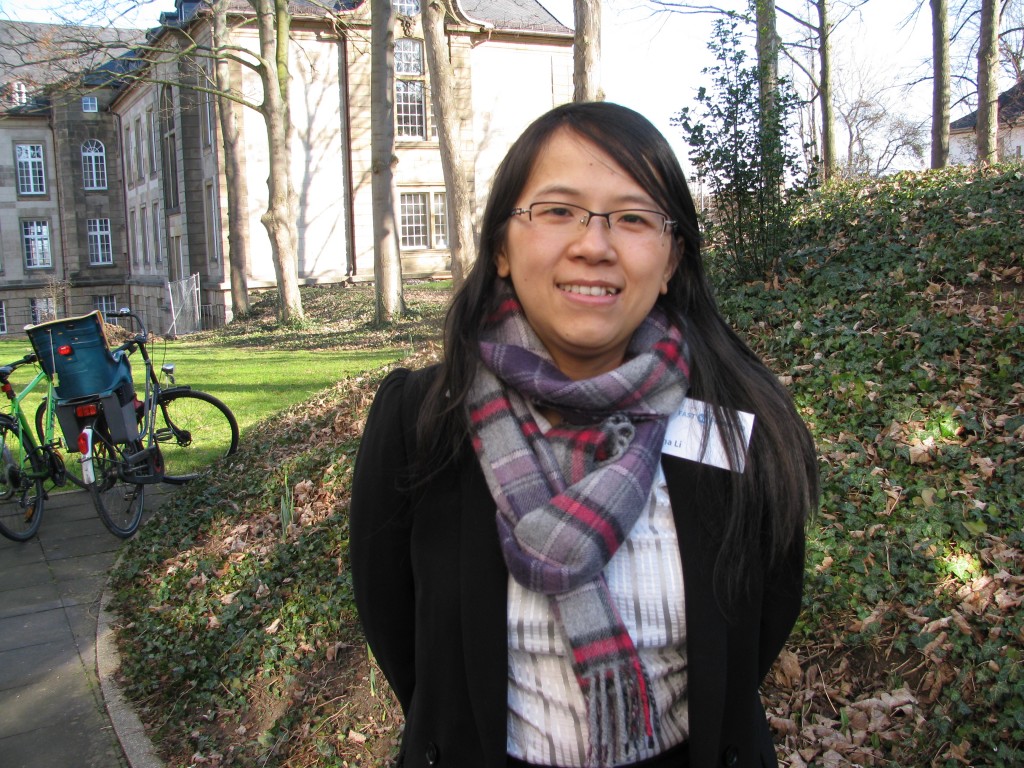
Lina Li from the Adelphi think-tank told me pollution concerns could speed up China’s climate action (Pic. I.Quaile)
The cost argument
Although many scientists are alarmed at the slow pace of emissions reductions, IPCC chief scientist Hoesung Lee told the Guardian in an interview it was still possible to keep to the two-degree target. The current UN climate chief Christina Figueres, who will hand over to Mexican Patricia Espinosa later this year, has said emissions would have to peak by 2020 if that limit is to be kept to. But Lee is keen to keep the options open, saying it would still be possible to keep to the limits if emissions peaked later. But he warned the costs could be “phenomenal”. He believes expensive and controversial geoengineering methods may be necessary to withdraw CO2 from the atmosphere and store it.
A report published this week by UNEP says the cost for assisting developing countries to adapt to climate change could reach up to 500 billion dollars annually by 2050. This is five times higher than previous estimates, the report says.
UNEP urged countries to channel more funds towards adaptation, saying the costs would rise “sharply”, even if countries succeed in limiting global temperature increase to two degrees Celsius.
I asked Mattias Söderberg, Co-Chair of the Climate change advisory group with the climate justice ACT alliance, how he felt about the progress of climate action and the role of the current Bonn meeting. He said the UNEP report, along with the alarming news about islands disappearing under rising seas in the Pacific, highlighted the urgent need for action. “Climate change is not a matter of tomorrow, but a crisis we need to deal with today.”
Time to ratify!
So far, 177 parties have signed the Agreement. But only 16 parties have ratified the treaty. It must be ratified by 55 parties representing 55 percent of total global emissions to enter into force. Söderberg called on wealthy, industrialized countries to move ahead with ratification:
“I am happy to see many of the poor and vulnerable countries moving fast with their ratification, and I hope other countries will follow soon. I am worried about the EU, which seems to be delayed”. Söderberg says the EU, could find itself on the sidelines, overtaken by others.
But the increasing concern over refugees and migration here in Europe could make a lot of countries look more closely at climate change, which is likely to increase the number of people having to leave their homes and look for a better life elsewhere.
“Go, world, go!”
NGO representatives stress that the Bonn talks can only help kick off the series of measures necessary to halt global climate change. Greenpeace climate policy chief Martin Kaiser told me the main work had to be done in the countries themselves, which have to work out their timetables to reach the goals agreed in Paris. That means an early transition to a fossil-free future. Kaiser called on host country Germany in particular, often cited as a model for its shift to renewable energy, to come up with a binding exit strategy for coal by 2030.
“Without an exit from coal, Germany’s signature under the Paris Agreement is worthless”, he told me.
The world’s top emitters, the USA and China, will also have to take major steps to halt climate warming. The delegates meeting in Bonn until May 26 have their work cut out for them. I have always been skeptical about the mass jubilation over the Paris Agreement. Yes, we needed it. But the proof of every pudding is in the eating. All the indications are that 2016 will be the hottest year on record, and probably by the largest margin ever. If the Paris document is to be more than a lot of pieces of paper, we will have to see things happening very soon – and definitely not just in the conference rooms of Bonn and elsewhere.
Climate worry grows at Arctic Frontiers
I have followed the past two days, the political section of the Arctic Frontiers conference, with great interest, with the thought of the Paris climate conference in November always at the back of my mind.
Clearly, in a country rich from the sale of oil, cutting climate-killing emissions is a tricky issue. The oil sector was strongly represented here, but so too were those who see the need for a transition away from fossil fuels in the interests of the global climate.
With climate change opening the Arctic to development and the search for the oil, gas and minerals thought to be locked beneath the icy region, this year’s Arctic Frontiers meeting has attracted record participation. The impact of low oil prices on development prospects, and political tensions between Russia and western Arctic states have heightened interest in listening to what experts and decision-makers have to say on the relation between climate and energy.

Arctic fan Prince Albert of Monaco and US special rep Fran Ulmer debated the feasibility of Arctic oil
With prime ministers from Norway and Finland and other ministers from Sweden and Denmark, as well as the US special Representative for the Arctic and the Russian President’s special representative for international polar cooperation addressing the meeting, media interest is high in this Arctic city, two hours flight north of the Norwegian capital, Oslo. (Looking at my flight schedule, I see Oslo is actually closer to Frankfurt than to the Arctic north of the country).
Do we need Arctic oil in a warming world?
The Norwegian premier Erna Solberg was here for the presentation of a report on sustainable growth in the north, a joint venture by Norway, Sweden and Finland. Gas is one of the four drivers named in the report. She left no doubt about her country’s continuing interest in oil and gas exploitation in the Arctic region. She told me in a brief interview she sees no contradiction between this and attempts to reach a new world climate agreement in Paris at the end of the year:
“’We have an oil and gas strategy. There are many not yet found areas where we think there is more gas. We think gas is an important part of a future energy mix, and I think we have to explore to find it.”
The same day, the Norwegian government allocated new licenses for exploration in the north-western Barents sea area of the Arctic. Many of the blocks released for petroleum licensing are close to the sea ice zone that had previously been protected. The zones have now been redefined. Conservation groups are upset. WWF Norway says the announcement is risky, as there is still a lack of knowledge about species and ecosystems in this area.
Will low oil price halt Arctic energy development?
With oil prices at a record low, environmentalists hope Arctic development will slow down or even be put “on ice” permanently. Representatives of WWF told the delegates in Tromso – including high-ranking representatives of major oil companies Statoil and Rosneft – the world does not need oil from the Arctic. And gas should be only a “transition fuel”. Samantha Smith, leader of the ngo’s Global Climate and Energy Initiative, quoted the recent study indicating that 50% of the world’s remaining gas and 30% of the oil must stay in the ground if the two degrees centigrade target for maximum global temperature rise agreed by the international community is to have any chance of being adhered to. She presented an alternative vision of “a thriving green economy in the white north”, with renewable energies replacing the search for oil and gas.
Business rethinking fossil investment?
As I wrote here on the Ice Blog after the Sunday evening opening, it is not only the environment lobby that is advocating a switch to renewable enerergy. Jens Ulltveit-Moe, the CEO of Umoe, one of the largest, privately owned companies in Norway, active amongst other things in shipping and energy, said with the current low oil price, Arctic oil was simply not viable, and this would remain the case for many years to come. And by then, he said, the EU’s climate targets and the international support for a two-degree target would make fossil fuels a non-option.
But Sjell Giæver, Director of Petroarctic and Tim Dodson, Norwegian Statoil’s Head of Global Exploration, insisted short-term price drops alone would not halt Arctic exploration. The region was the last place to discover large new reservoirs to satisfy continuing high demand for oil and gas for an increasing world population.
Oil ventures in the Arctic have not been particularly successful in recent years. Statoil’s Dobson admits the biggest ever exploration drilling programme in the Barents Sea last year had a disappointing outcome. Statoil and others have also withdrawn from the hunt for oil off the coast of Greenland.
Russia hungry for Arctic energy
But the Russian President’s Special Representative for International Cooperation in the Arctic, Arthur Chilingarov, who is also a Member of the Board of Directors at the Russian oil giant Rosneft, stressed the company had completed construction of the northernmost well in the world last September. He said a new oil and gas field has been discovered and the program of Rosneft for 2015 to 2019 provided for a large volume of prospecting and drilling in the western part of the Arctic.

The rector of Tromso UiT Arctic University of Norway Anne Husbeckk and the mayor of Tromso Jens Johan Hyort have reason to be happy with the attendance at this year’s Arctic Frontiers event.
One factor however that is slowing Russian activity the Arctic is the implementation of sanctions by European countries and the USA on account of the tensions over Ukraine. Russia has turned to China and other countries for help, but the lack of western technology is an obstacle to further development in a region where bad weather, ice, remoteness and complete darkness in the winter months make oil and gas development a risky business.
There is a clear tendency amongst those involved in Arctic cooperation to play down the sanctions and keep political tensions out of the region. Norwegian President Solberg told me: “We have a good relationship in the Arctic Council with Russia. We have said we will be in line with Europe on sanctions, although Norway is one of the countries hit most by the counter-sanctions from Russia, for instance the fact that oil and gas exploration are among the sanction areas.”
But in the meantime, on a day-to-day basis, cooperation continues, for instance in the joint management of fish resources, said Solberg.
Business as usual?
While the debate continued in the political section of Arctic Frontiers, a new, business strand of the conference opened in parallel. It focuses – on oil, gas and minerals. Olav Orheim from GRID Arendal, a centre that works with UNEP, stressed that a lot of people here are in favour of Arctic oil and gas exploration, in the interests of jobs and economic benefits.Yet after the publication of last year’s IPCC report and with climate change high on the international agenda, there seems to be a wider acceptance here in Tromso of the disconnect between burning fossil fuels and the ever more urgent need to reduce greenhouse gas emissions.
Gunnar Sand is Vice President of SINTEF, the Norwegian “Foundation for Scientific and Industrial Research”, which has close ties to the oil business. From a moral point of view, “we all want to stay below the two degree limit”, says Sand. But it is not possible to change a society and an infrastructure based on fossil fuels overnight.
Technical progress too slow to stop warming
Technology for renewable energy is still not developing fast enough, says Sand. Emission reduction scenarios also rely heavily on carbon capture and storage (CCS), which would reduce emissions from fossil fuel burning and bridge the transition to a low-carbon economy. But the technology, which he himself has been involved in, is moving too slowly. I first met him during a visit to Svalbard, when he told me about a carbon capture and storage project, designed to capture emissions from Longyearbjen’s power station underground. He confirmed in Tromso that it has never been put into action.
Global warming, Sand says, is the most serious challenge of our time. This has to be reflected in political priorities. Governments have to create economic incentives to speed up change.

Salve Dahle, Chairman of the conference steering committee and master of ceremonies sporting a sealskin bow tie.
US special representative ex-Admiral Robert Papp indicated dealing with climate change would be one of the key policy drivers when the USA takes over the Chair of the Arctic Council, the international body that coordinates Arctic affairs, in April.
The Chair of the US Arctic Research Commission Fran Ulmer says a carbon tax would be the best way forward, to encourage industry and consumers to save energy and cut emissions. But she acknowledged the reluctance of governments to impose decisions that could upset their voters at the next election. That is the reality we face as countries weigh up their pledges for the November climate conference in Paris.
UN Climate Chief on New York summit
Your Ice Blogger has been busy with the New York climate summit around the corner. I was delighted to read that Ban Ki Moon is considering a special Arctic summit and a trip on a Greenpeace Arctic mission vessel after receiving a petition to Save the Arctic. I am also hoping there will be some high-profile promises of climate action.
Meanwhile, here in Bonn, I talked to Christiana Figueres, the Executive Secretary of the UNFCCC (Climate Secretariat), which is based here in Bonn, just next door to my Deutsche Welle Office, before she left for New York.
She told me what she expects of this meeting, which is something different from the regular UN climate summits. She also told me why she was joining yesterday’s climate march.
Let me share some excerpts from the interview in writing here with you, and offer you a full length audio version of my talk to this very influential and passionate lady.
More on the climate summit and the Arctic here soon.
Excerpts from my interview with Christiana Figueres:
Ice Blogger: Why do we need yet another climate summit?
The conferences we organize once a year have the purpose of moving towards a legally based agreement, scheduled to be adopted in Paris next year. In New York, nothing is going to be negotiated. It’s very much an attempt to blow wind into the sails of the formal process. It’s about raising political will and public awareness. It is a powerful opportunity for the leaders of countries and corporations to come forward and say what each of them is going to do.
UN Secretary-General Ban Ki-moon has asked these leaders to bring bold announcements and actions to the summit. What do you expect to come out of it?
We will have a host of announcements from governments about what they are already doing and will undertake with respect to bringing down their own emissions and increasing the resilience that they need to incorporate into their planning and their infrastructure to deal with the variability and the vulnerability of climate change. From the private sector we expect the same: announcements as to how they are going to contribute to reduce emissions, either in their own operations or, even more interestingly, how they are going to be shifting their capital into low-carbon services and products to accelerate the global shift towards a low-carbon economy.
Are you expecting major announcements by the host country USA or a key player such as China?
Yes, we are expecting all countries to come forward and begin to put on the table what they will be able to contribute next year into a much more formal setting. But for that, the deadline is not until March 2015. What we expect is indications of what is possible. The fact is that most countries around the world are currently doing their homework and figuring out at a national scale what is financially, politically, economically and technically possible for them to do.
The summit is taking place in the USA, a key player in terms of emissions and a possible new climate agreement. Can hosting the summit there make a difference to US attitudes and policy?
The second term of President Obama has seen an accelerated and up-scaled engagement on climate change. The latest move of the Obama administration to ask the EPA (US Environmental Protection Agency) to come forward with regulations on power plants is probably the most ambitious action the US government has taken on climate change. We expect President Obama will be giving indications of how the United States is going to further build on those efforts. It is also very interesting that on US land, there will be the people’s climate march, just two days before the summit. That will show that there is, even in the United States, broad and deep public support for global climate policy making.
Do you think this kind of grassroots movement is what we need to take things forward?
I think it’s a very important component. I’m very grateful to the organizers of the march and to everyone who’s going to be at the march. I will be there, because it’s important to give a very strong message that it is not just the responsibility of governments or corporations, but rather there is also civil society responsibility here to make their awareness and concern felt, and encourage countries and companies to move towards low-carbon economies as soon as possible.
Some people say cities and regions should play a bigger role while governments struggle to negotiate a climate agreement?
Well it’s not an either or. Cities all around the world have already taken a very impressive lead. And we will hear from them. The mayors of hundreds of cities will be in New York, and the same goes for regions, whether it’s groups of countries or groups of municipalities. The optimization of climate action is going to come from the coherent integration of policy from the international level to the national to the local level.
Isn’t it difficult to arouse interest in an additional climate summit in the current world political situation with attention focused on conflicts in the Middle East, Ukraine and other places?
The whole week in New York will see much press attention to the summit. Not only because we will have hundreds of thousands of people on the street, not only because we will have hundreds of political leaders there, hundreds of corporations, but because they are all coming to New York for one very powerful reason. That is, climate change is now the biggest challenge that humanity has faced, certainly in this century. And there is growing awareness of this. There is already a lot of conflict around the world, around water scarcity, around migration, around food and security, and that is exacerbated by climate change. So if we want to prevent conflicts that will scale out of control, then we have to address climate change in a timely fashion.
The latest figures show greenhouse gas emissions are still rising. Scientists say the two degree target is virtually out of reach. What has to happen to bring about the kind of action we need to avert disastrous climate change?
Science has made it very clear: there is only one pathway that will allow us to stay under the maximum two degree maximum temperature increase which is the maximum temperature increase we could allow, and still maintain a more or less predictable climate for all populations around the world. So this summit and the formal processes which will occur in Peru at the end of this year and in France at the end of next year are three very important clarion calls to world leaders both public and private that time is running out. We still have the time to do it, but in order to avert the worst effects of climate change, we have to come to a global agreement by next year.




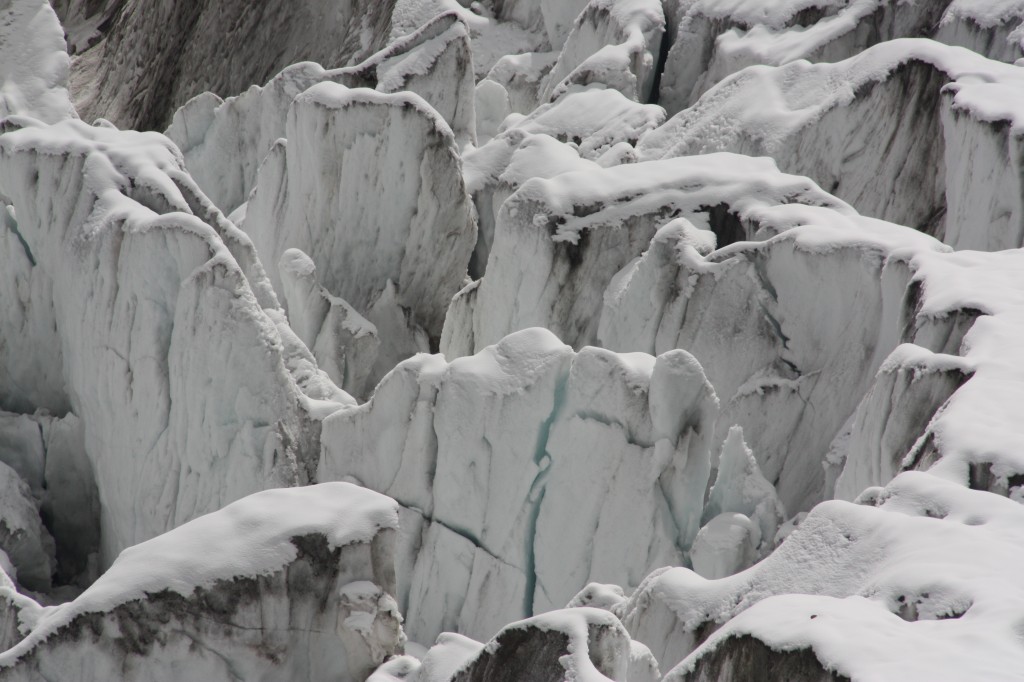
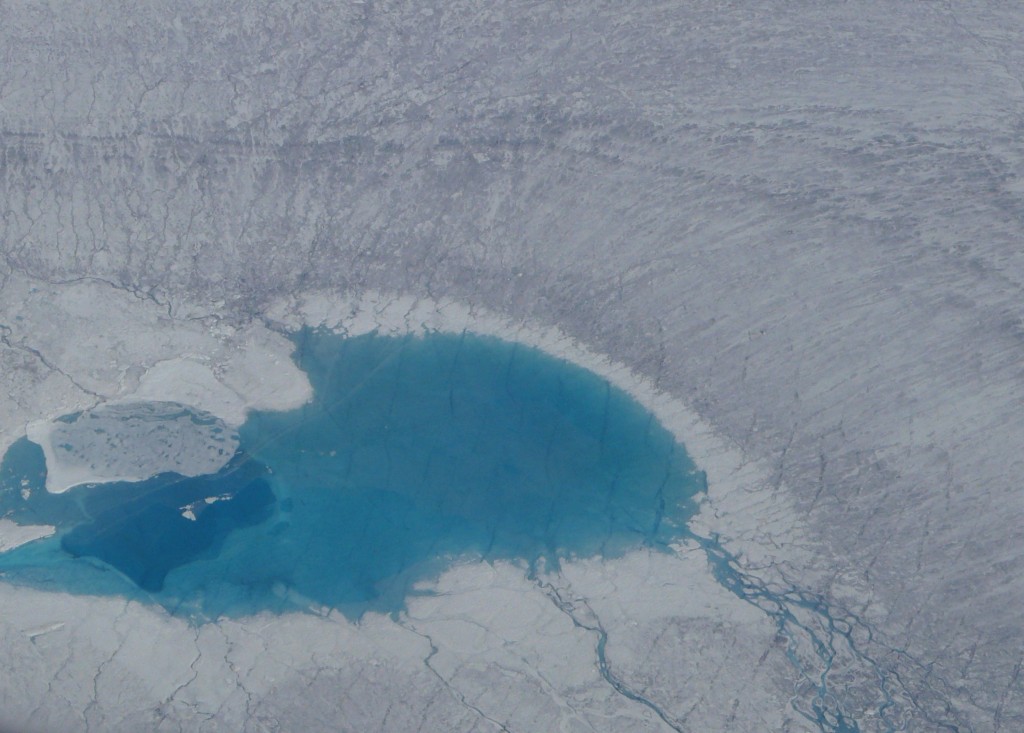

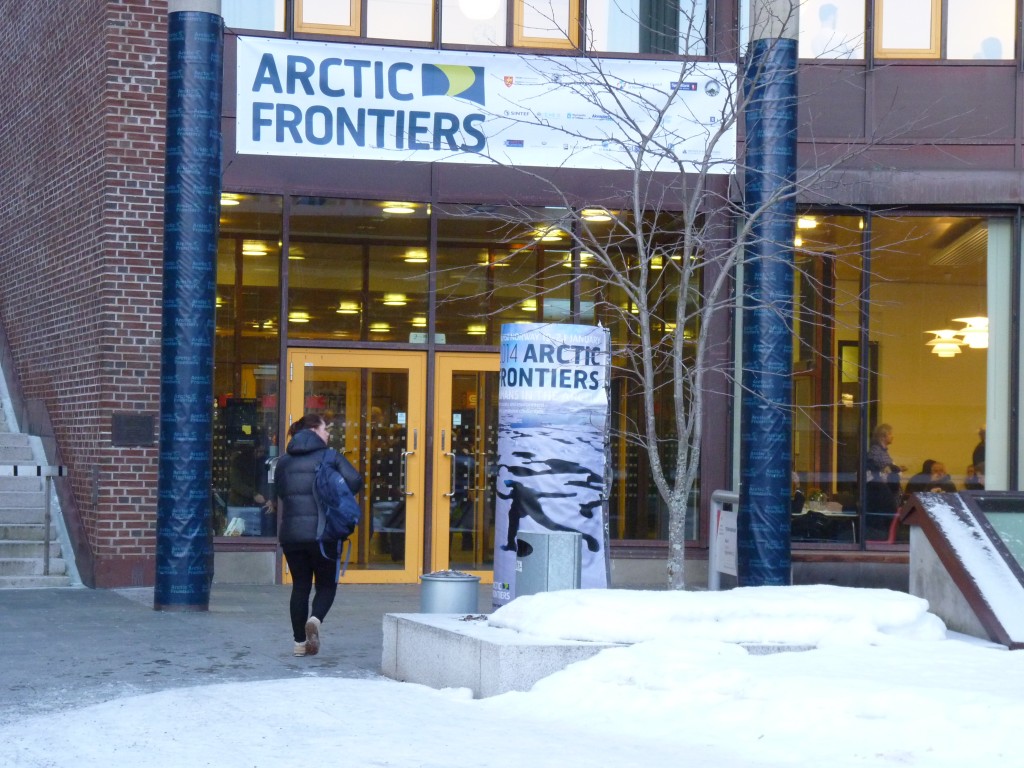
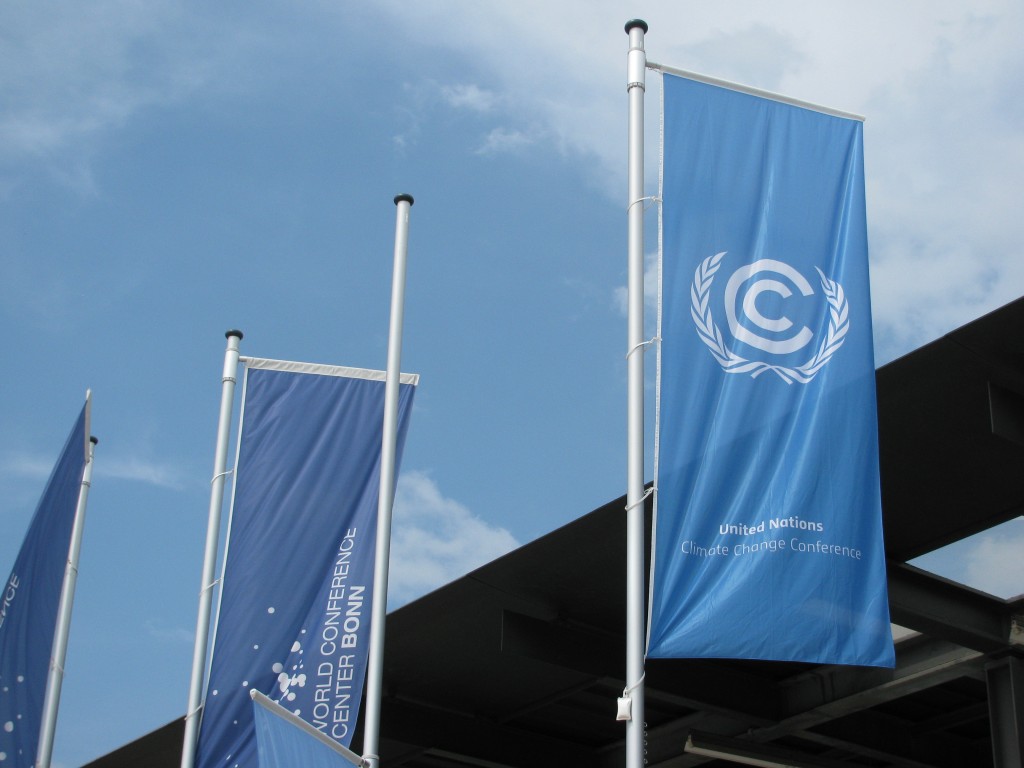
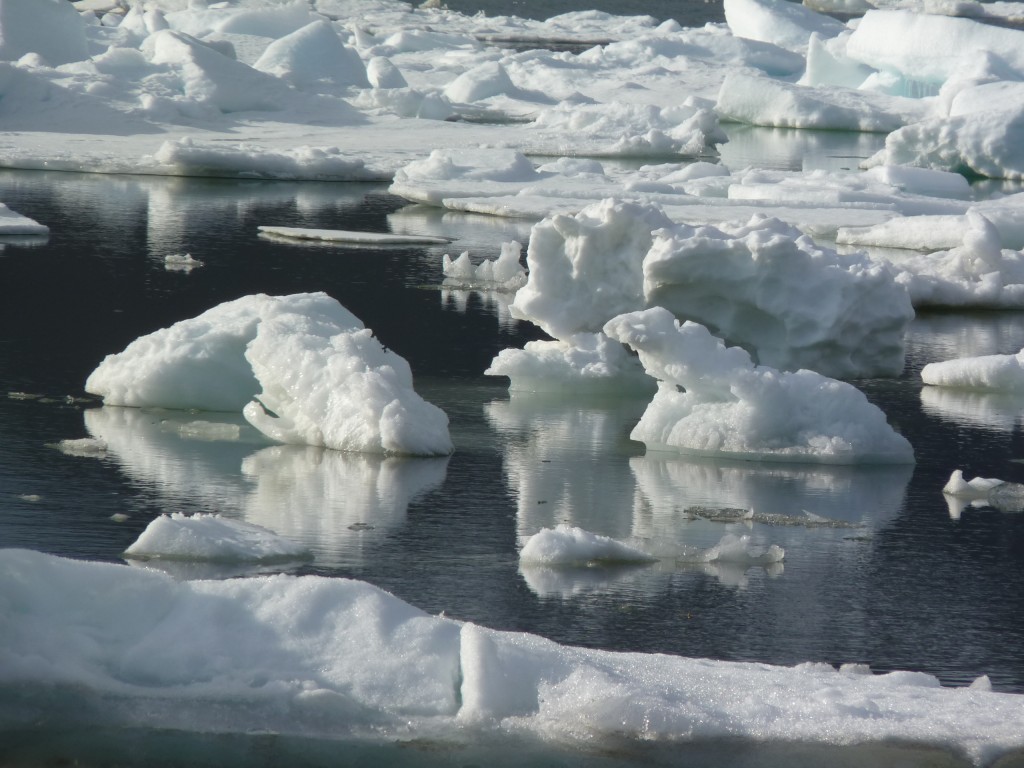


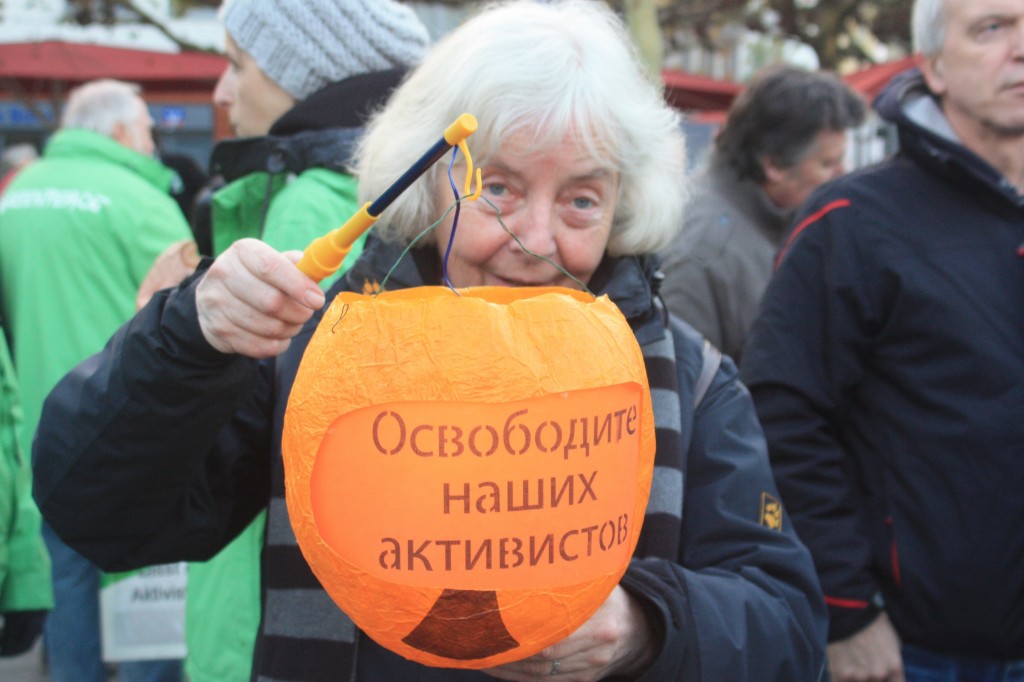
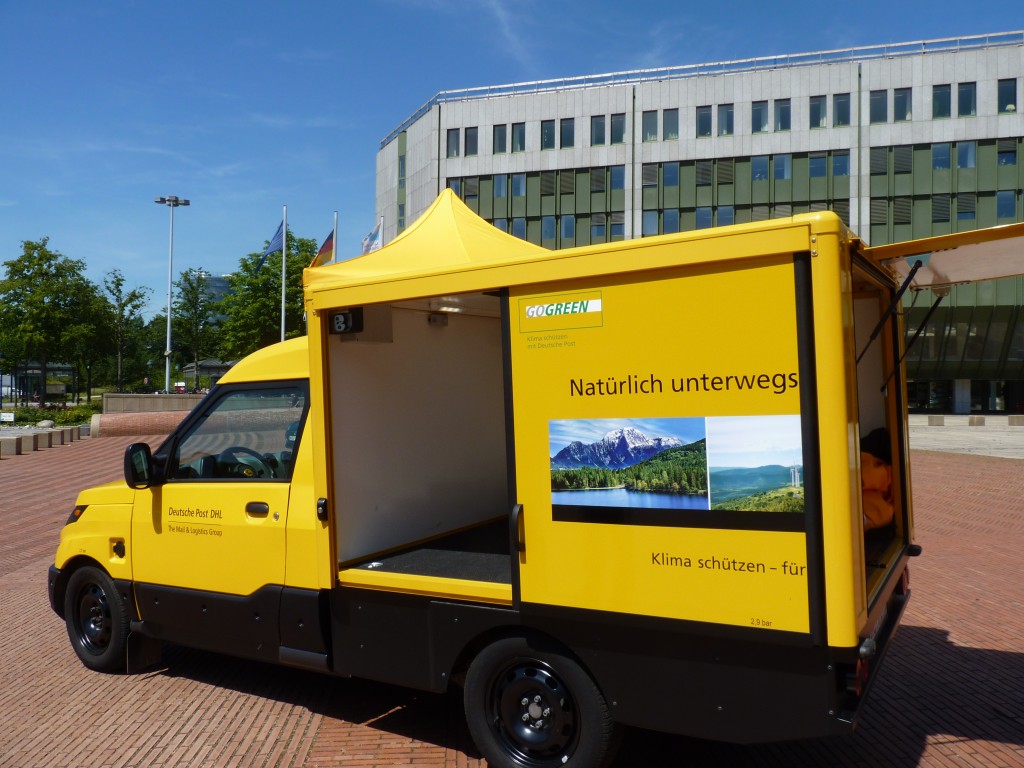
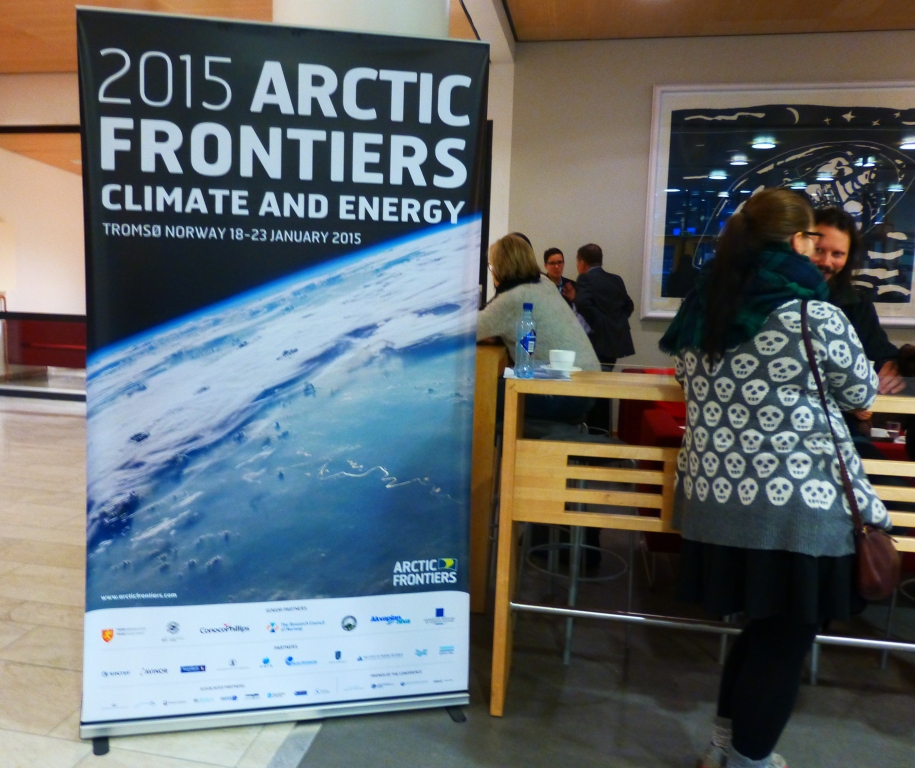


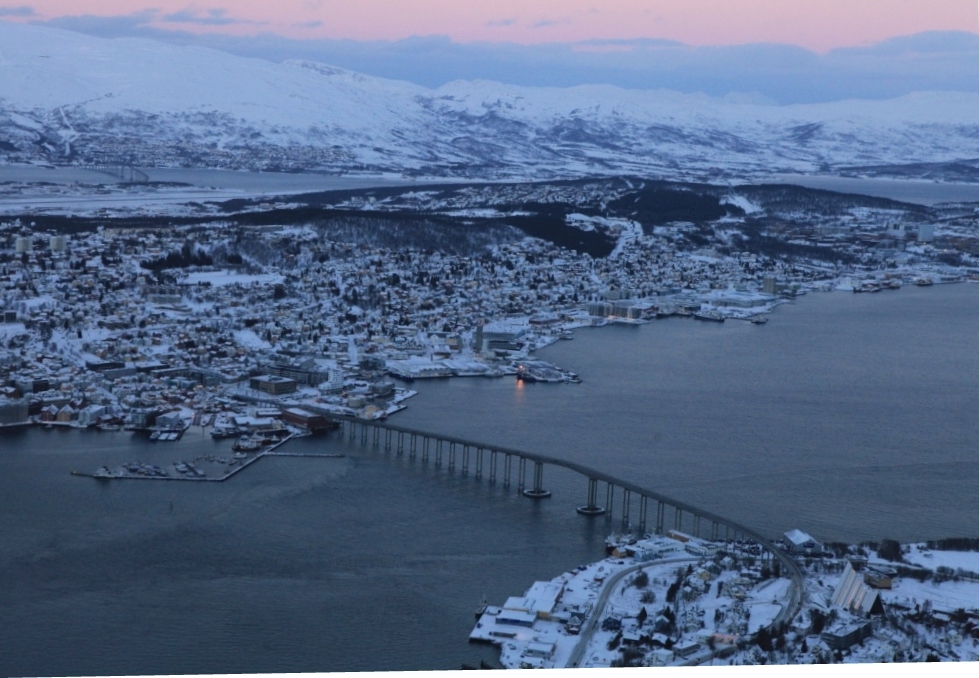

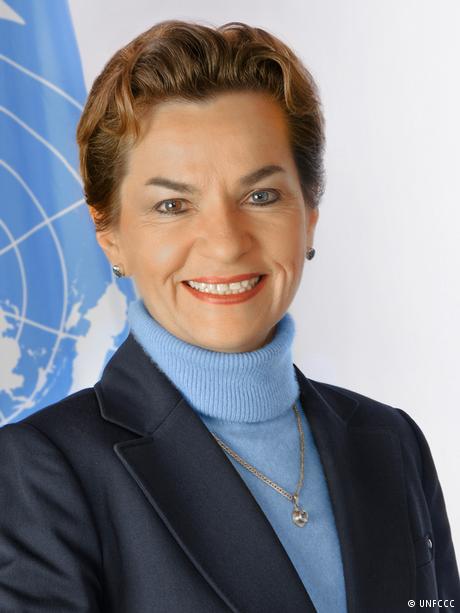
















Feedback